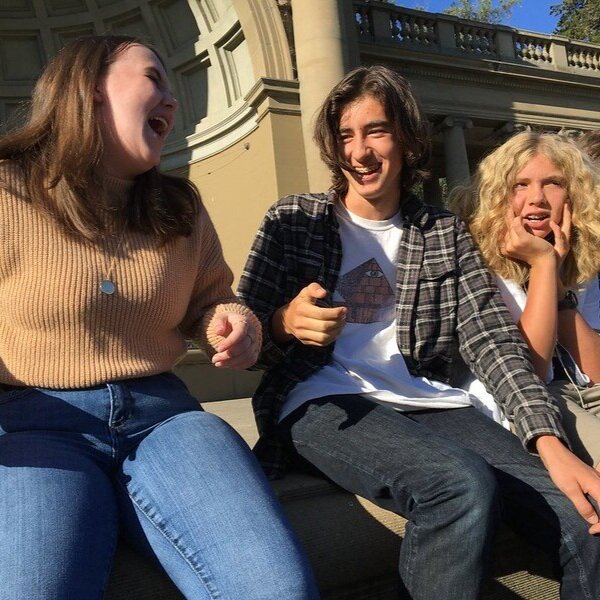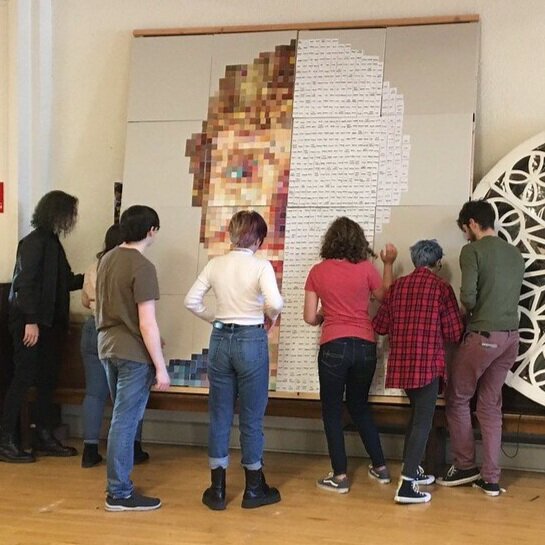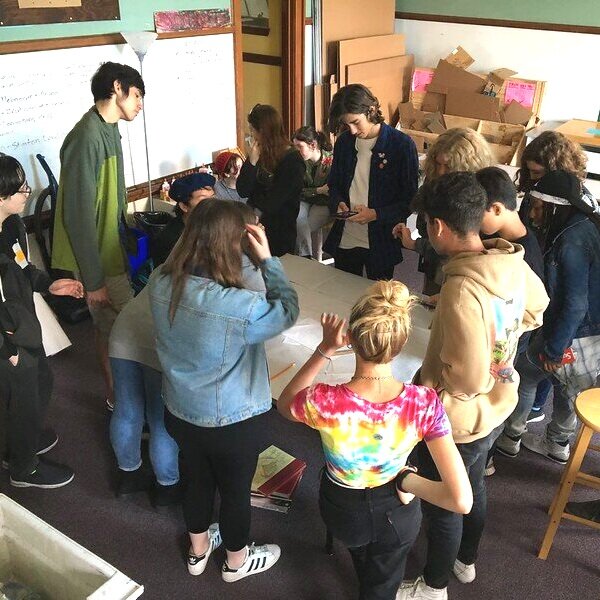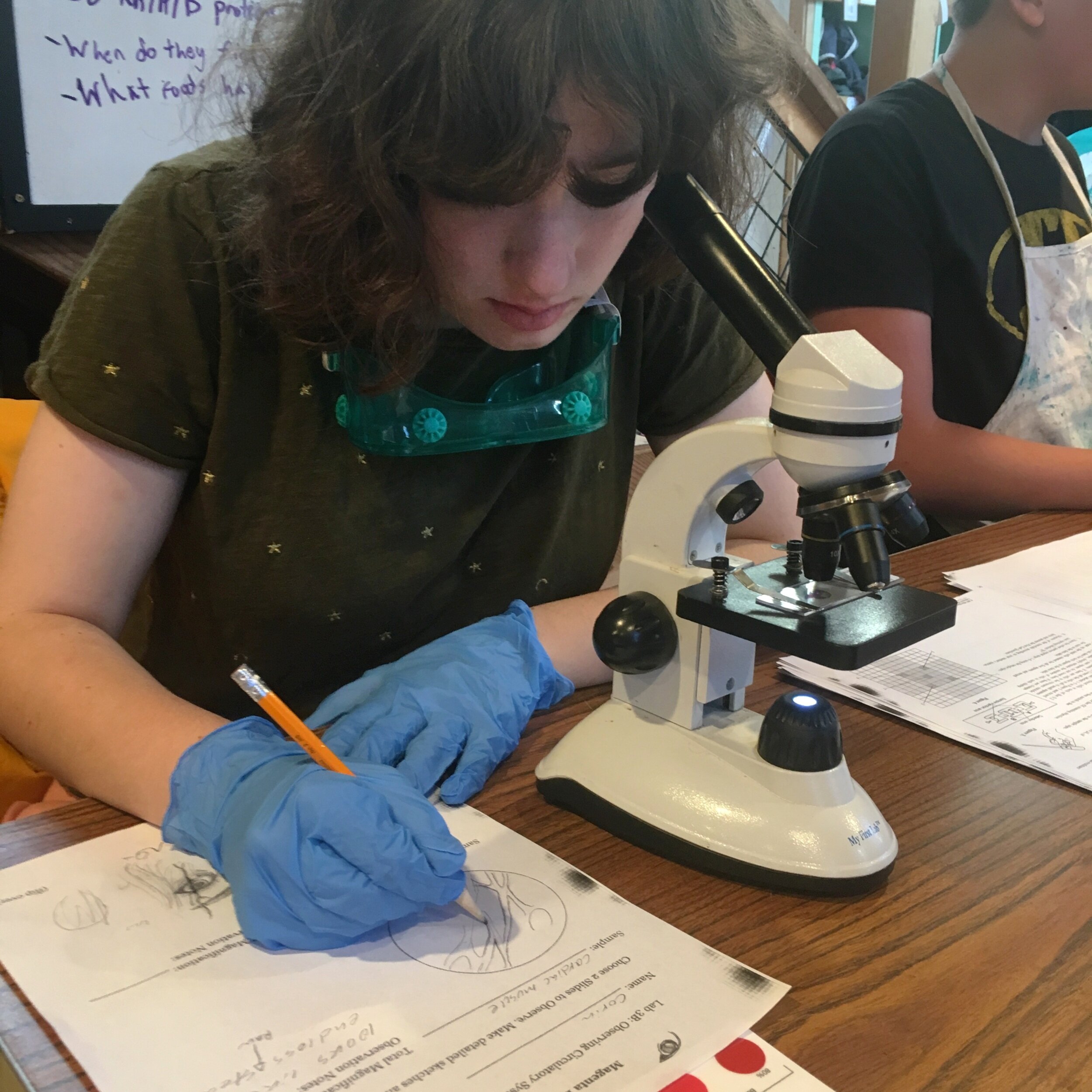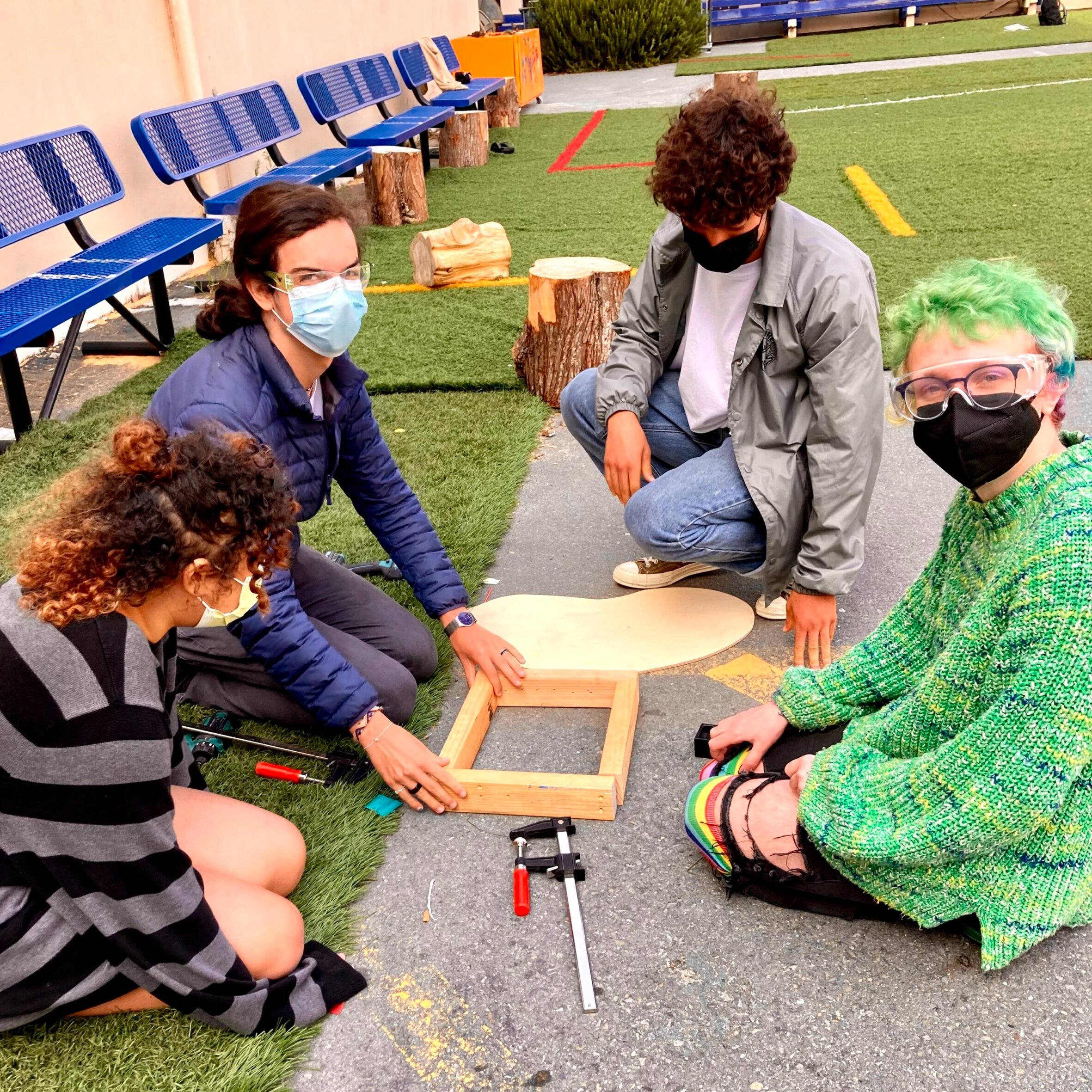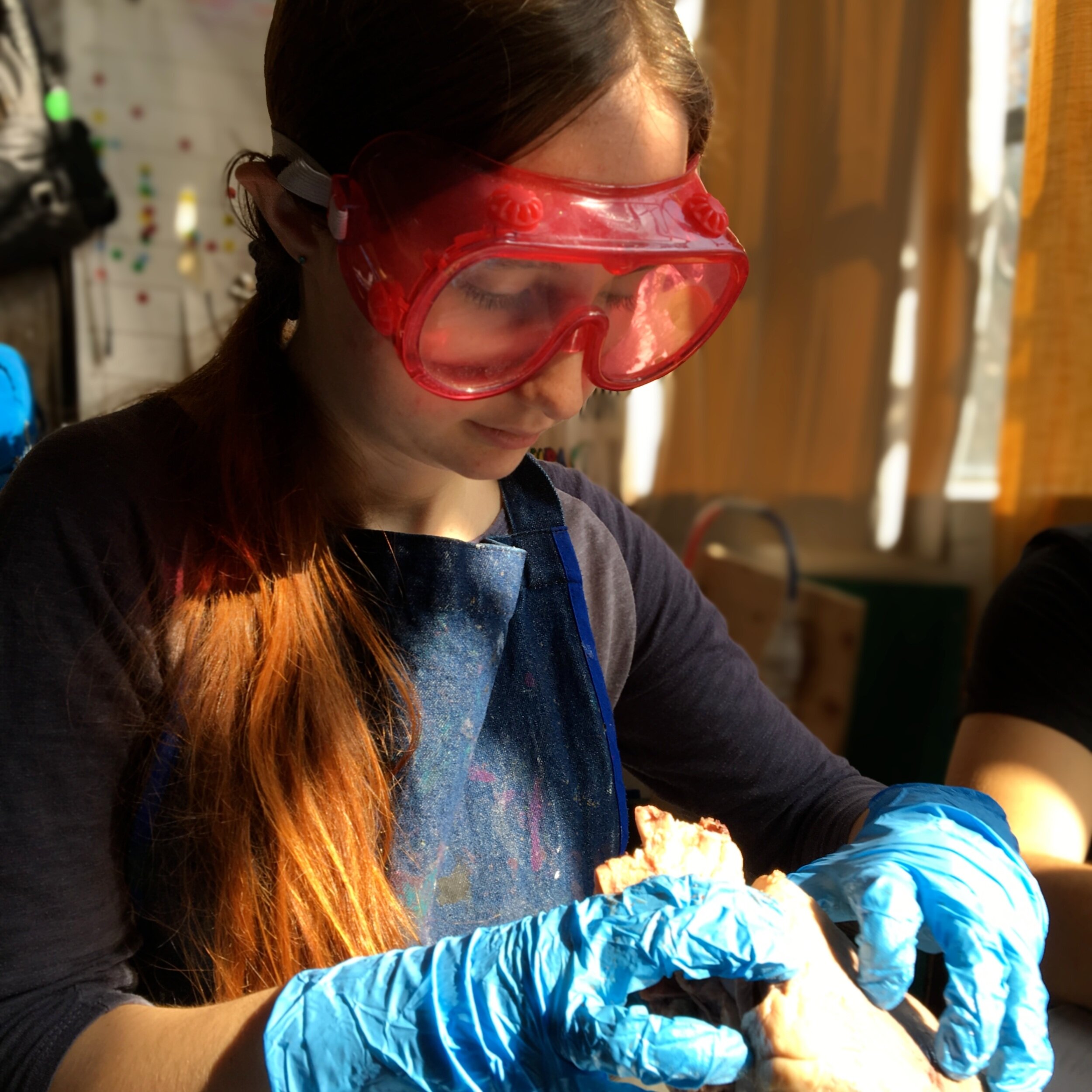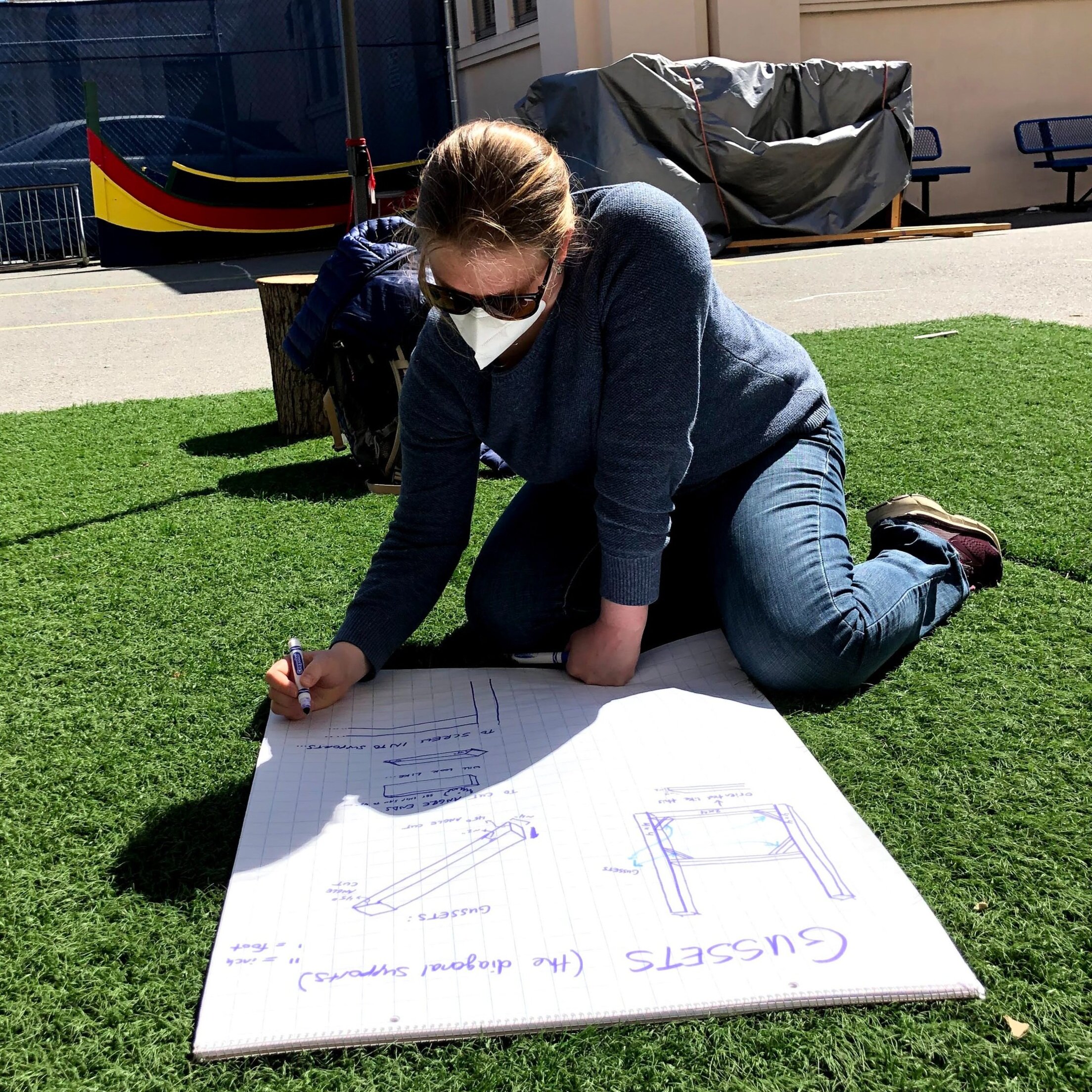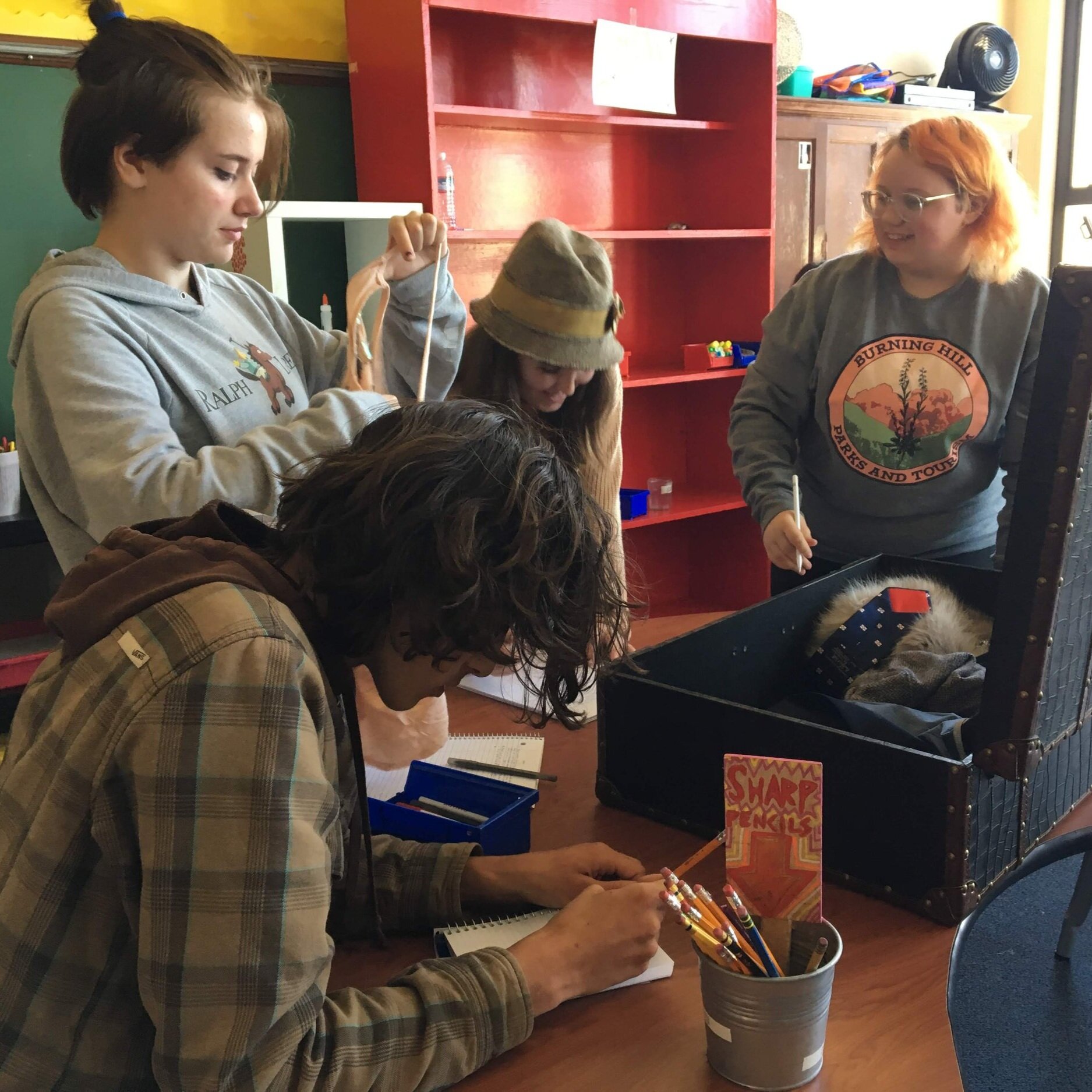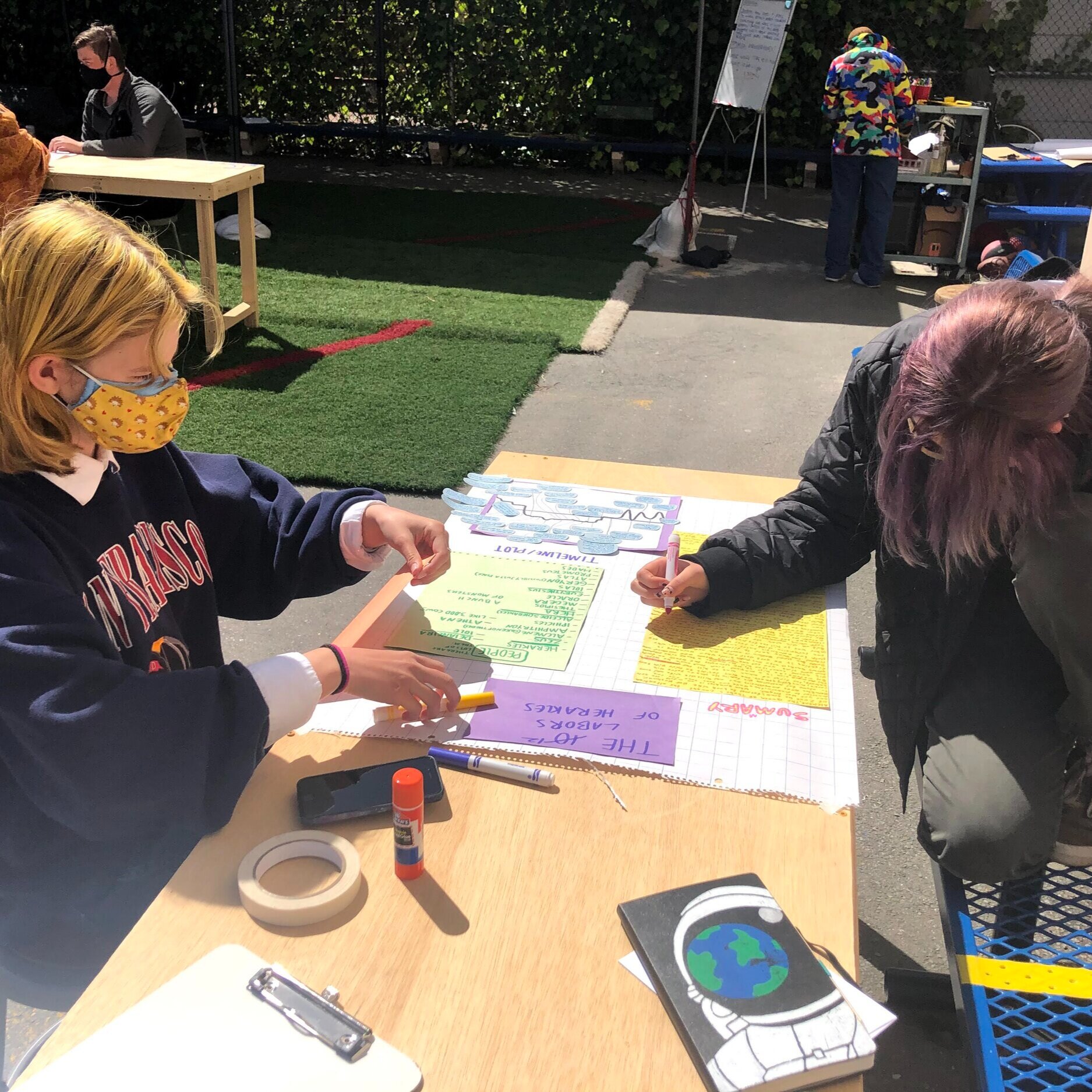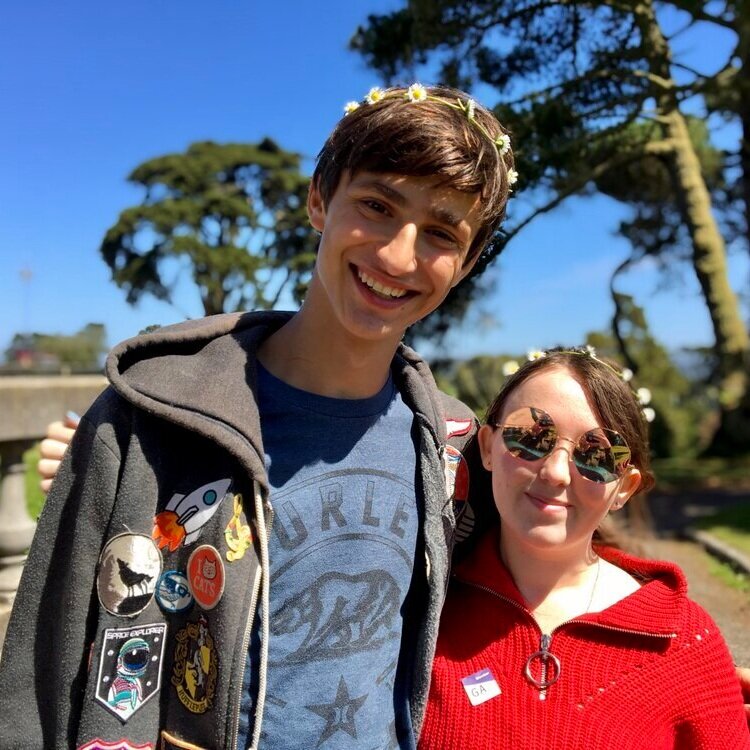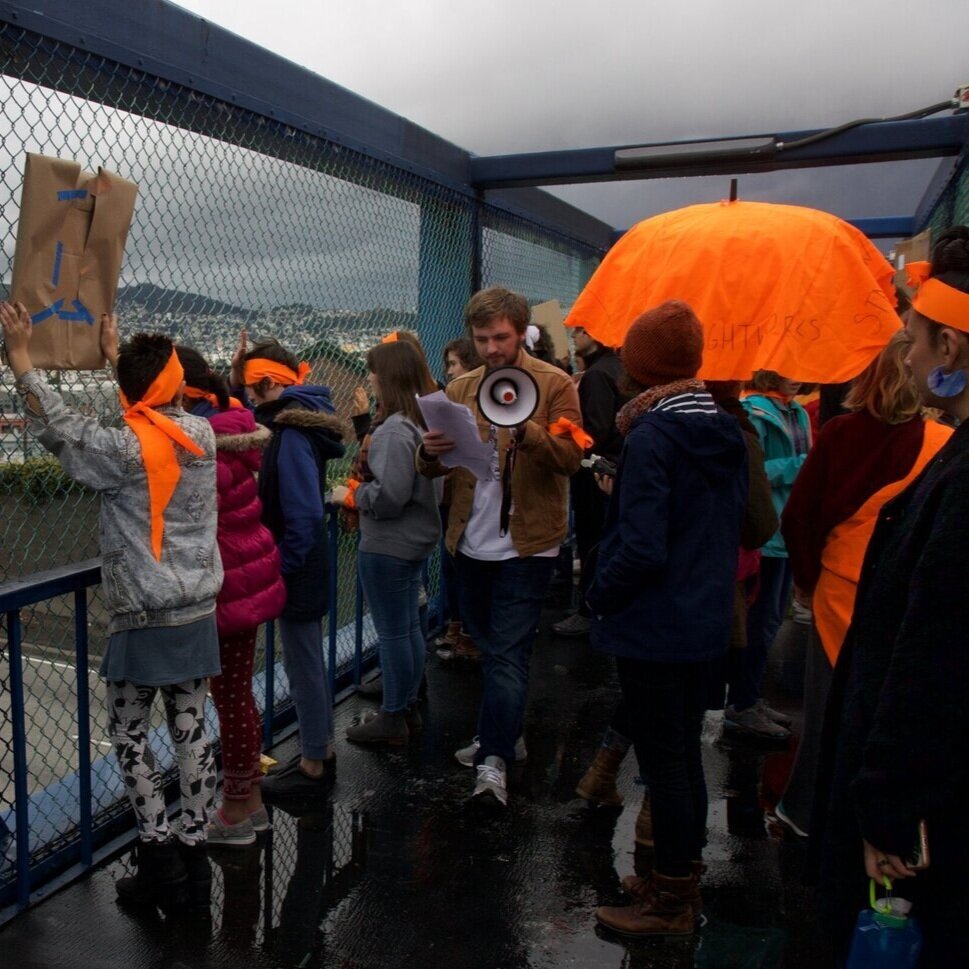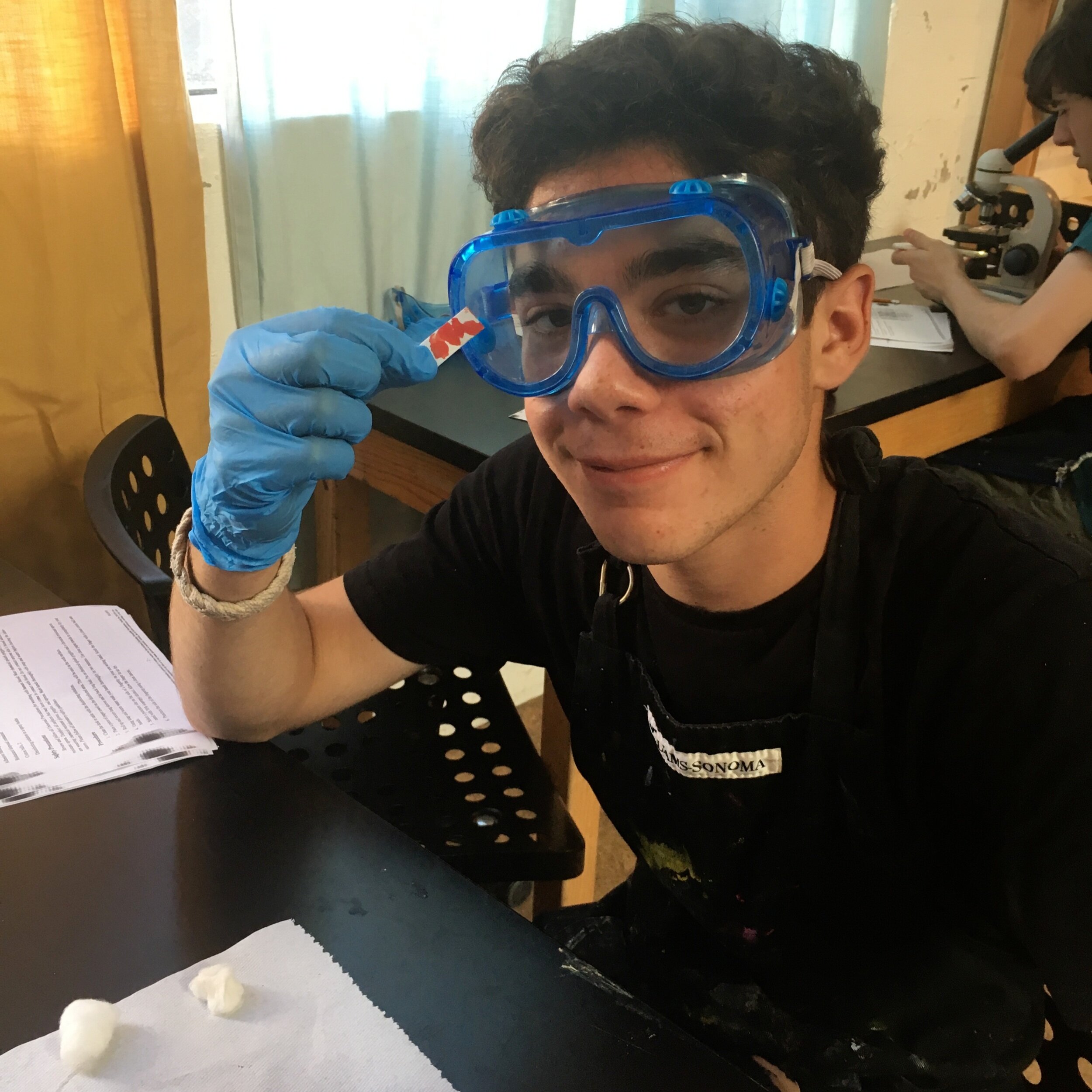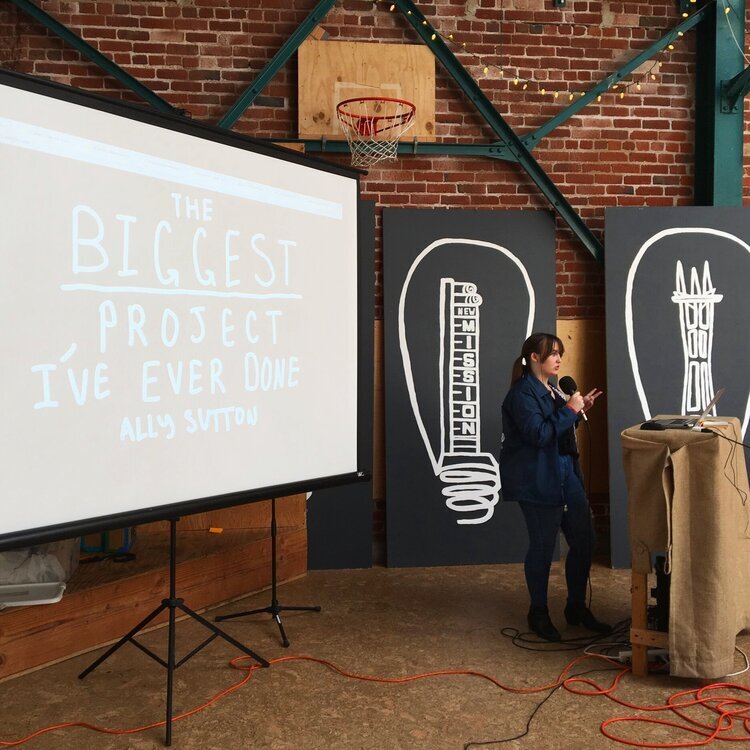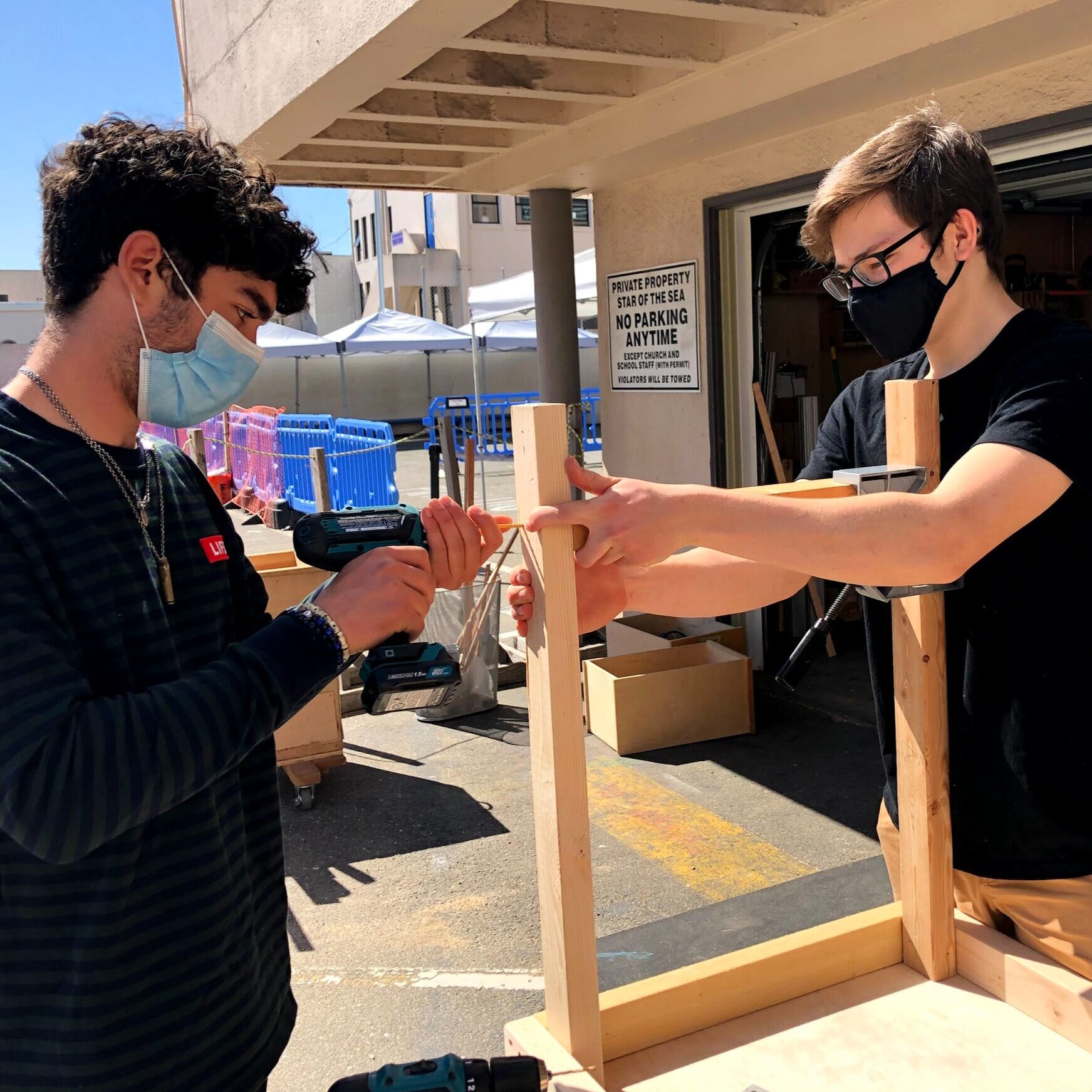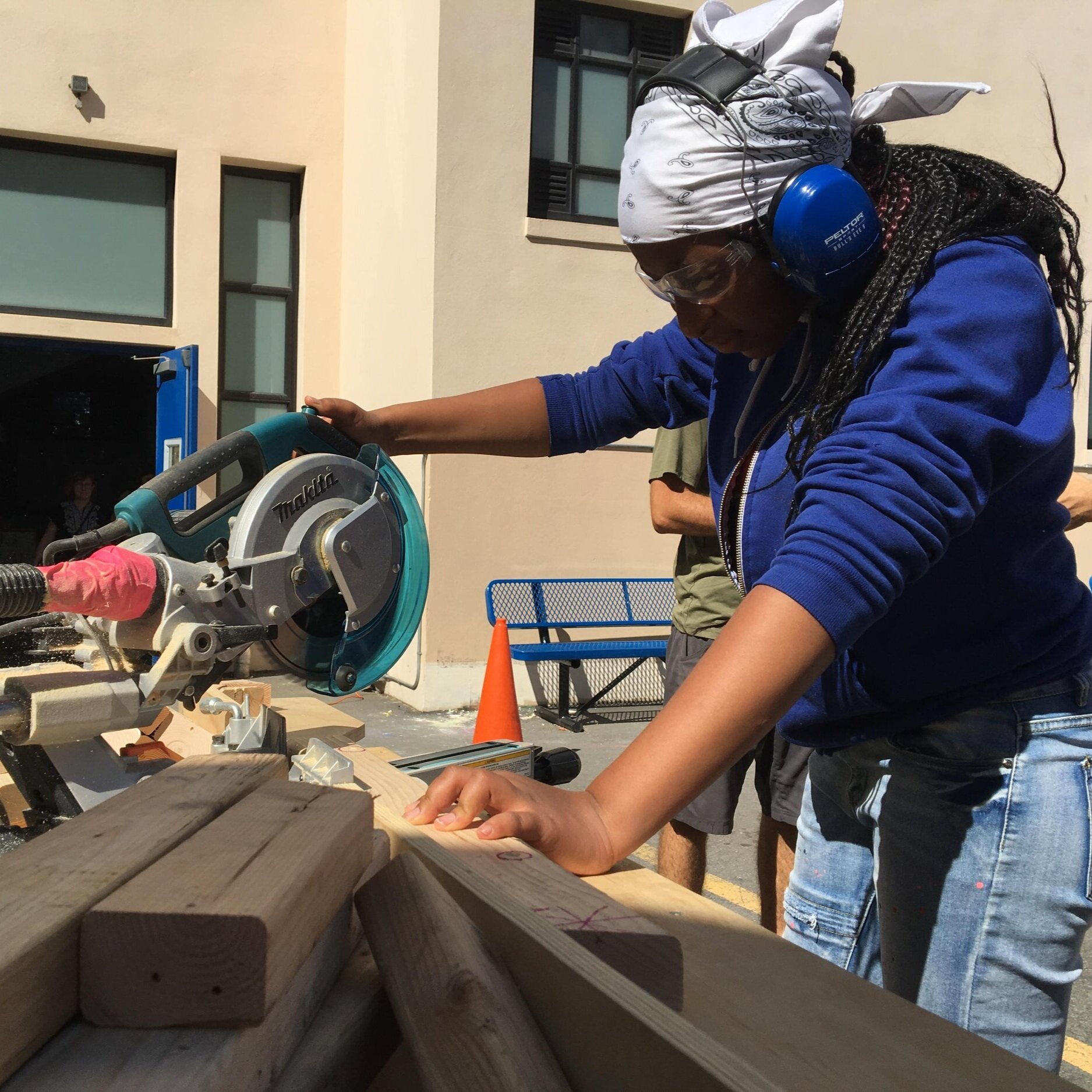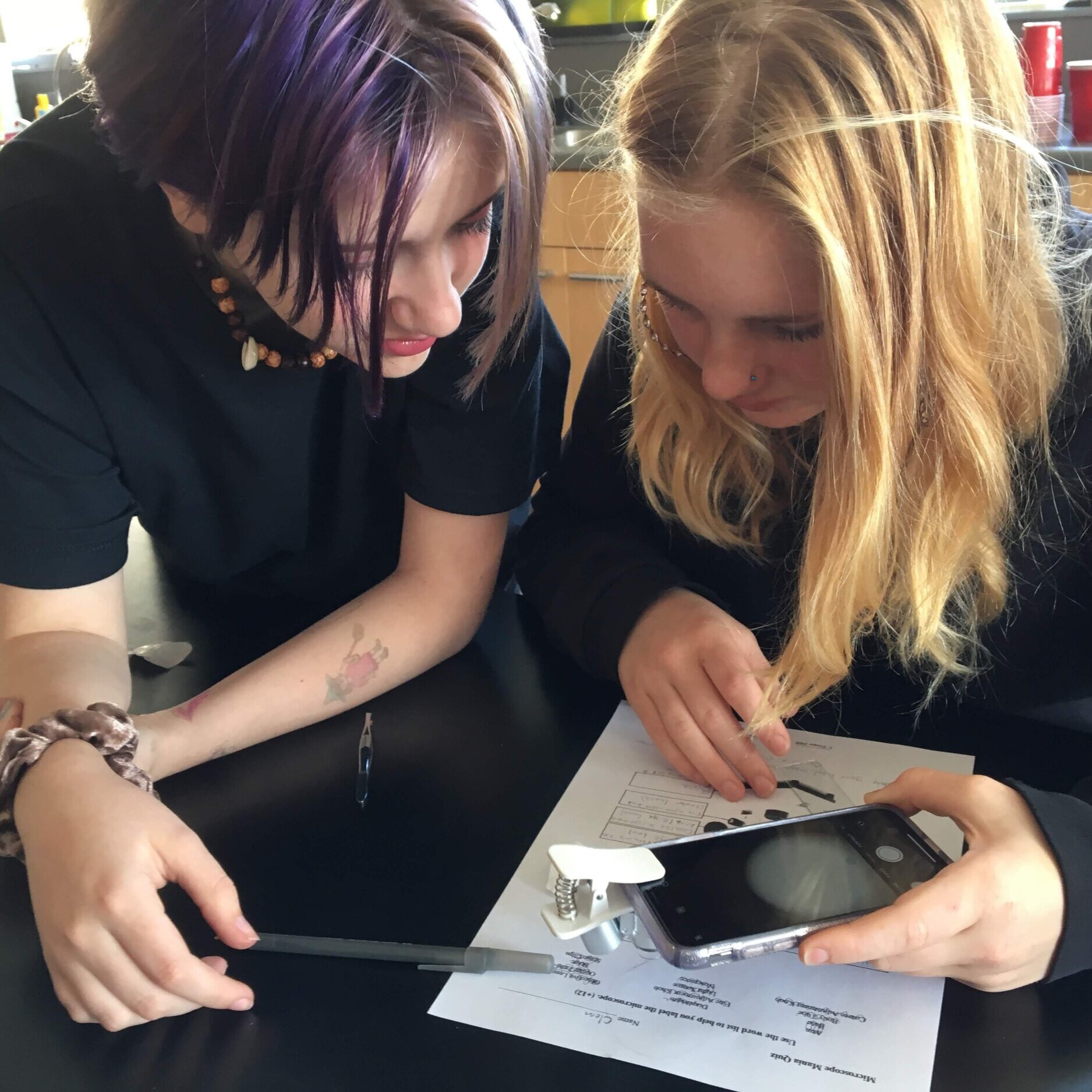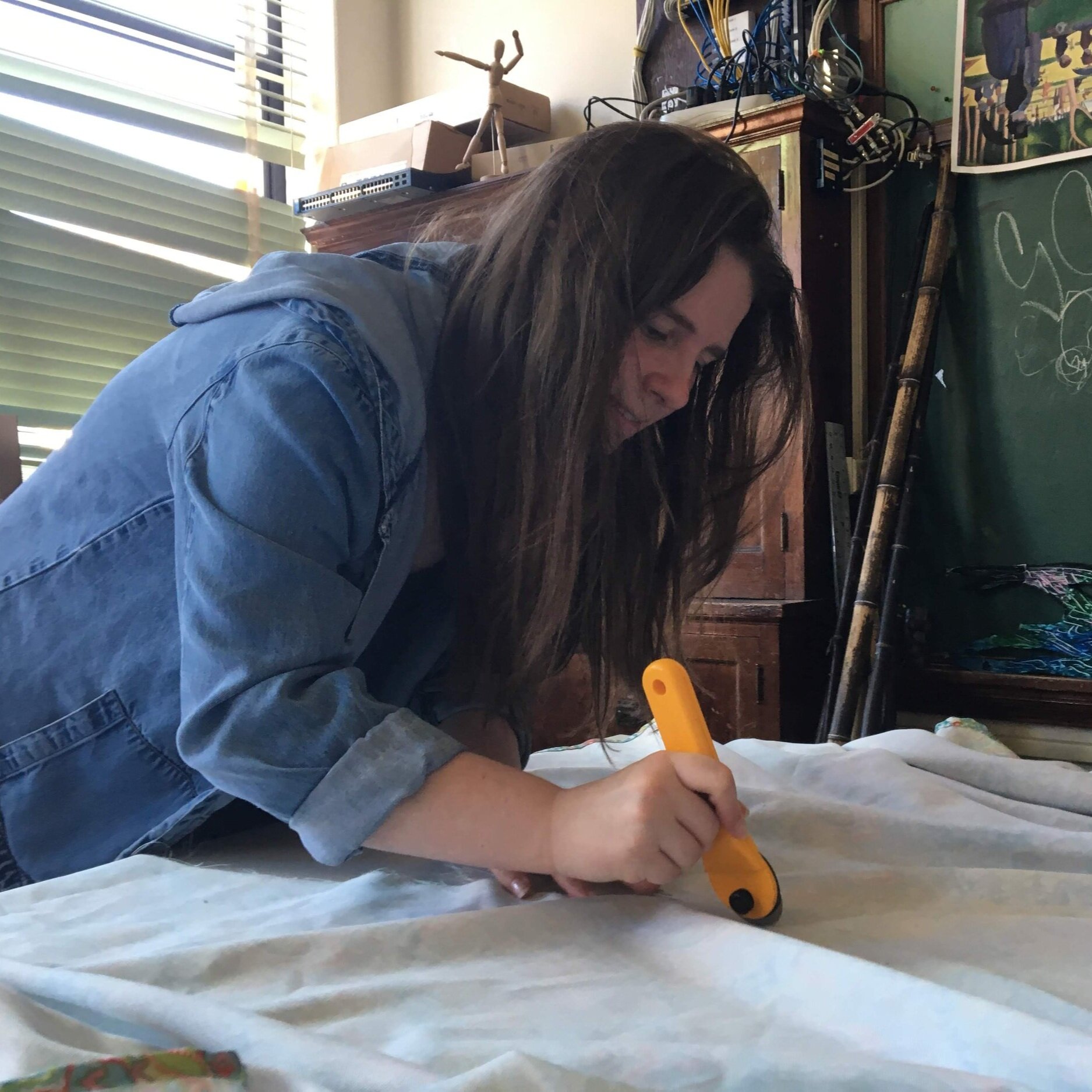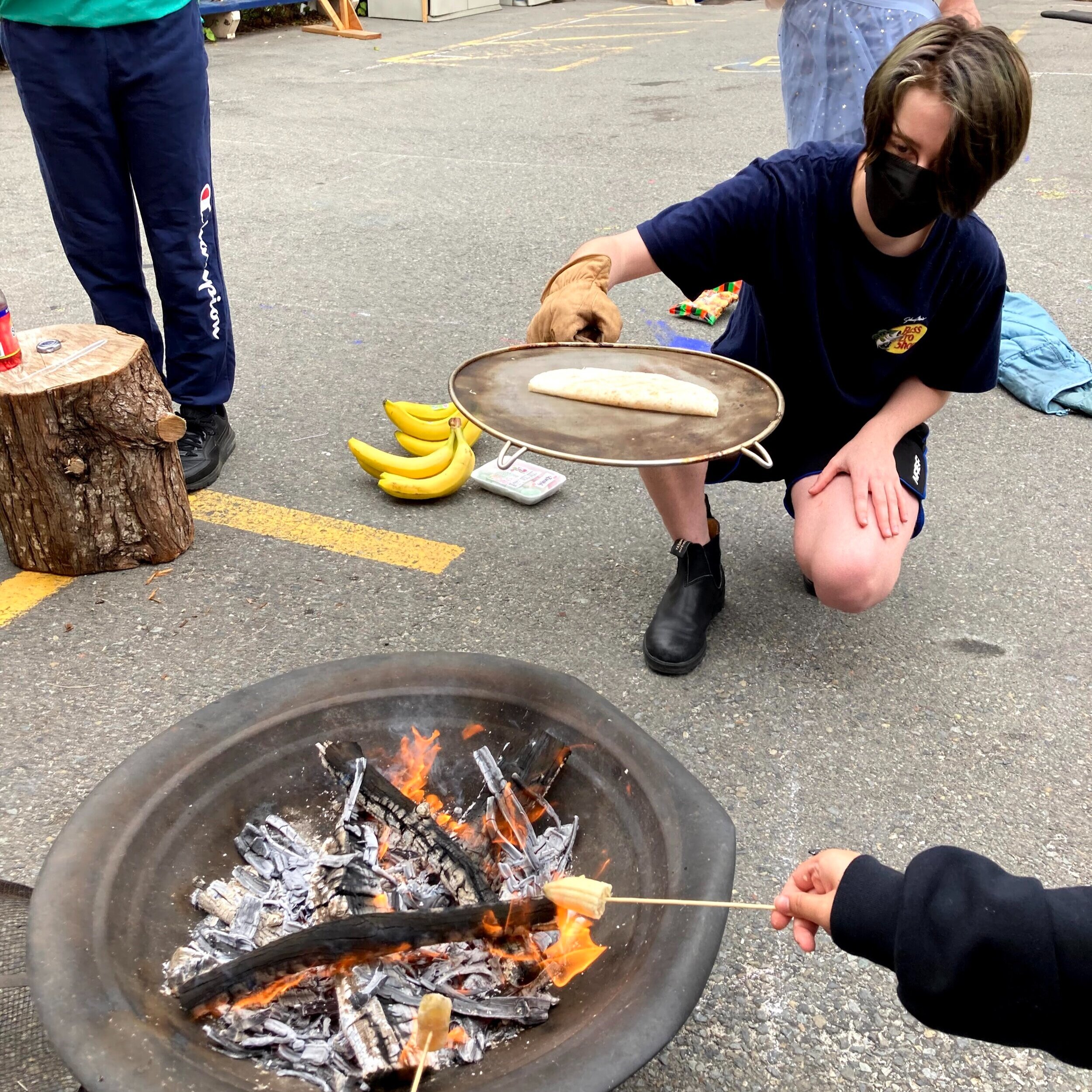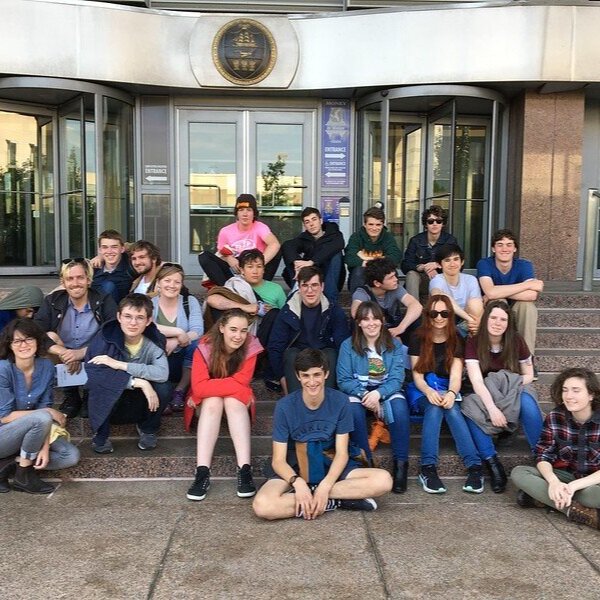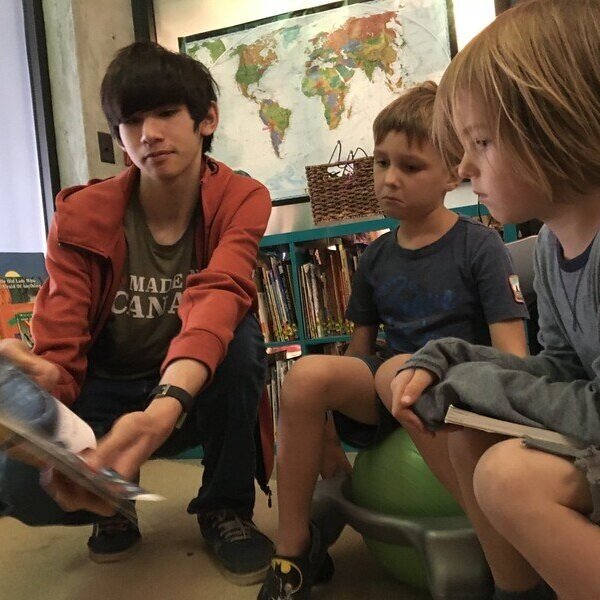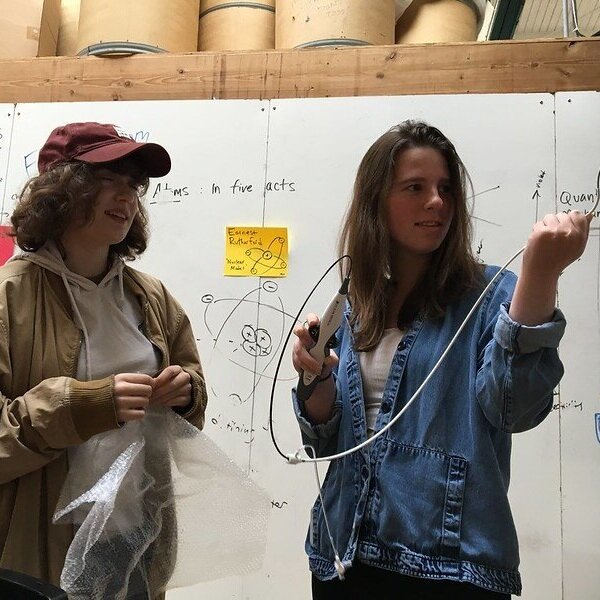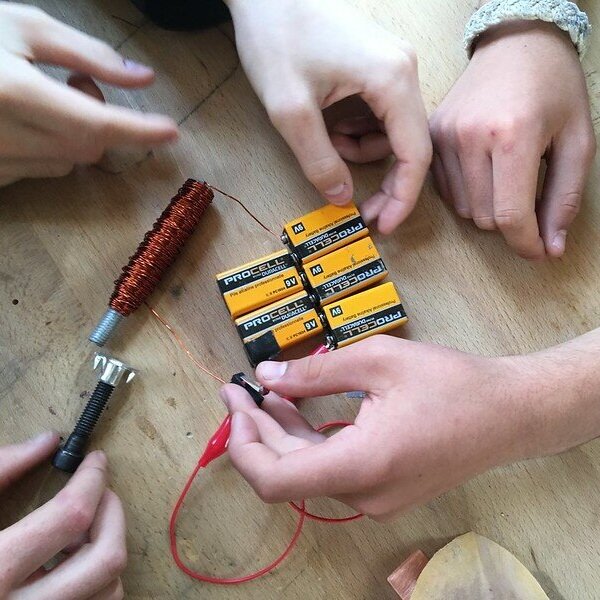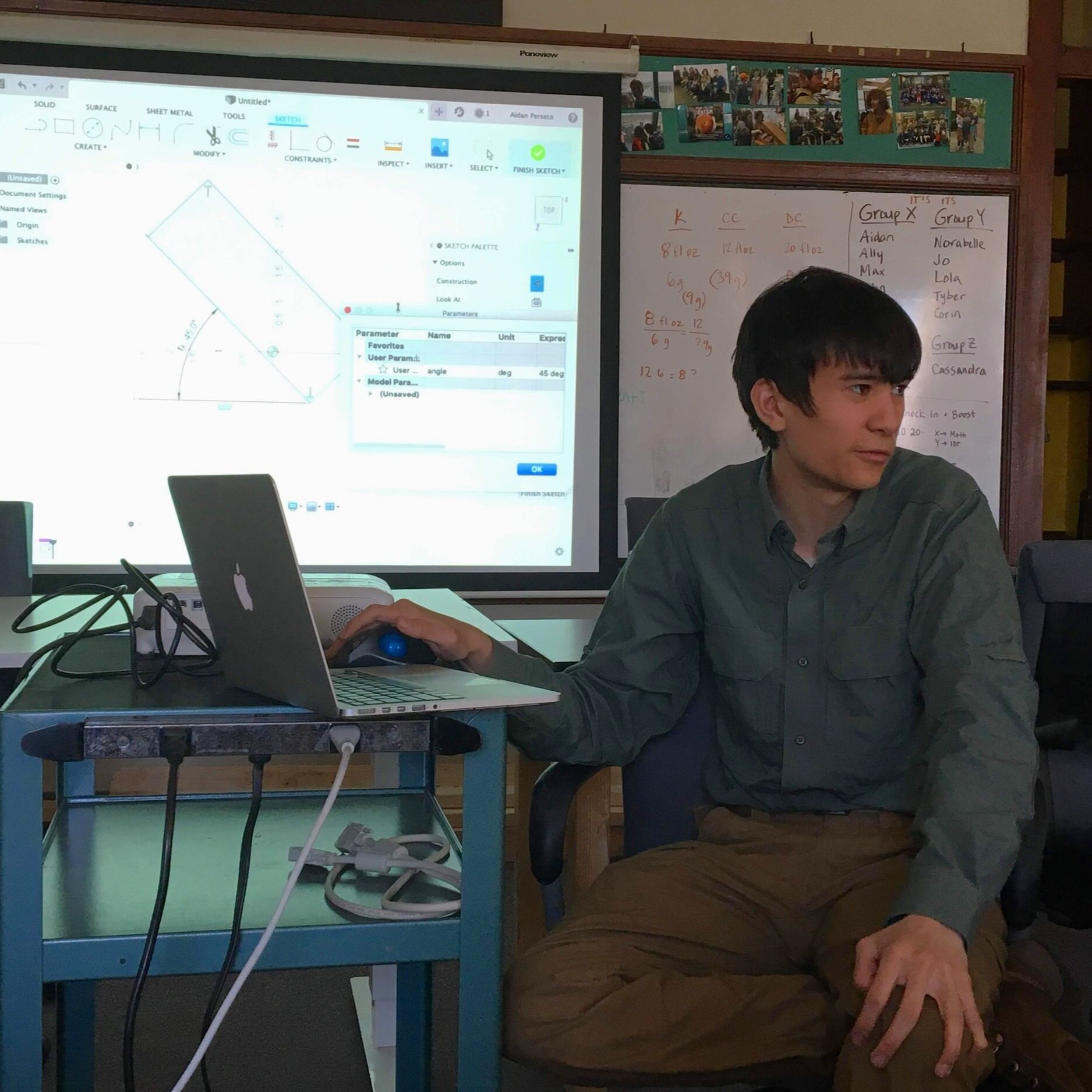High School
The Brightworks High School is a Micro Program that fosters students’ self-directed learning, applied academics, and investment in the community. High school uses the arc’s pedagogical framework to help students frame bigger, more interdisciplinary projects with a social justice angle and meaningful community contributions. In a single year, students participate in two rigorous, interdisciplinary group projects that are driven by community engagement, real-world problems, and collaboration. Academic study is approached both separately and contextualized into project work.
These semester-long arc projects are paired with independent projects that are scaffolded to build project management skills and self-directed learning habits. Independent projects are driven by students’ interests and passions, and help them practice project management, iteration, growth mindset, and reflection. Both modes of project work provide students material to build a portfolio of work to show their accomplishments, mastery, and engagement with real problems with real materials.
Project-Based Learning
Project-based learning in high school builds upon students’ intrinsic motivation to set challenges for themselves that surpass their own expectations while connecting academic skills to real-world problems. Projects in high school reflect community need, connection to the city and the community, and allow students to practice empathy and deep learning alongside experts and peers.
Projects prepare students for life beyond twelfth grade by mimicking the real-world project experience. High school projects require students to do pre-research on their subject before declaring their project, to ask good and insightful questions, to know how and who to access for support in prep work and along the way, and to understand the audience the project is reaching and what their needs are. These critical thinking skills and design thinking practice serve students as they move into higher education or work environments.
Colleges are looking for students whose engagement in school goes beyond the classroom and more traditional ways of getting involved. Our students know who they are and what they want to accomplish after they leave high school. They enter higher education with competencies that enhance traditional academics, with 21st century skills like creativity, collaboration, and flexibility, and with the habits of lifelong learners. Scroll further to see the list of colleges that have accepted our students.
Day-to-Day
Our school days are made up of a dynamic combination of group subject study, independent project work time, community service, camping and outdoor experiences, field trip adventures, and internship or apprenticeship experiences.
Our curriculum follows the same arc-based format as the middle and lower schools at Brightworks. And we provide each student with the time and space to iterate what they do and how they do it. On any given day we might be dissecting Homer’s Odyssey, a chicken’s heart, or the meaning of life.
Our small collaborator-to-student ratios (groups of around 12 mixed-age students) allows us to focus on learning in all forms so that we honor students for who they are, how they learn, and who they strive to be, with space for curiosity, engagement, and tenacity.
Flow of the School Day
9:15-9:30 All-School Circle: A daily gathering of students and collaborators across the school to say hello, make announcements about the day, celebrate birthdays, participate in welcome games that practice names, dexterity, and fun.
9:30 - 9:45 Morning meeting, social-emotional learning conversations and community building
9:45 - 12:00 Morning block: This time can looks like deep dives into arc-related explorations and academic study, workshops related to the big group project with expert teachers, literature study and discussion, art provocations, and inclusivity and intersectionality curriculum, with breaks for movement and stretching in the middle.
Examples of morning classes:
Filmmaking with Jamie from the Bay Area Video Coalition
Grantwriting with Professor Carroll from Santa Clara University
Literature with collaborators
Inclusivity and Intersectionality with collaborators & DEI consultant Sergio
12:00-1:15 Lunch & Break
1:15-3:15 Afternoon Block: High schoolers take more responsibility for planning their own time (with supports where needed) so afternoons vary between their separate Math class with our math collaborator, independently designed time for study, catching up on work, one-on-one meetings with collaborators, or swaths of time for project work.
3:15-3:30 Reset & End of day
Competency Areas
Taking inspiration from organizations like the Common Core, the Next Generation Science Standards, Learning for Justice, the International Society for Technology in Education, the Mastery Transcript Consortium schools collective, and a decade’s worth of managing students’ projects, Brightworks has set the following competency areas for its high schoolers as they take on projects and make connections between each traditional subject area in a multi-modal and interdisciplinary way. These competency areas are the backbone of the Mastery Transcript that students build during their four years of high school.
Social, Cultural, and Historical Fluency: A Brightworks student will think critically and understand how to interpret information in various texts to share information, formulate arguments, and support opinions.
Civic Engagement: A Brightworks student will engage with the world to understand social and political context and seek ways to create positive impacts.
Quantitative & Scientific Fluency: A Brightworks student will use science, mathematics, and engineering concepts to deepen their understanding of the world, convey ideas, interpret data, and make predictions.
Problem Solving & Analysis: A Brightworks student uses design thinking to understand real world problems, creates a unique solutions and adapts those solutions for their context.
Communication and Self Expression: A Brightworks student will convey complex understandings, original ideas, and make connections through multiple mediums, lenses, and disciplines.
Self-Directed Learning: A Brightworks student will develop the skills to manage their own work and engagement with ideas, projects, and passions.
Social, Emotional & Community Awareness: A Brightworks student will know themselves as a learner and as an individual, will be practiced in collaborating with others, and will be positive members of the community.
Beyond High School
Brightworks high schoolers exhibit engagement and passion and go on to contribute to a greater good as successful, happy, healthy adults. Our students emerge from high school with a clarity of purpose and personal drive that supports their success in whatever path they choose following graduation.
Many of our students pursue degrees at four-year academic programs. They identify universities and colleges that are looking for students like them, where the values around education and experience at the college level match what the students are looking for in a next step. Other students head toward community college while doing internship work at an architectural firm or airfield, for example, or by working with elementary students to get hours for a career in early education.
As a nontraditional, experimental program, we know that our school is not for everyone – but students who choose Brightworks will find themselves in a community that takes their work seriously, that values hard thinking and new ways of expressing those thoughts, and that loves learning. Whichever path they choose, our students set off on the next part of their journey with intention, gumption, and curiosity.
So far, our students have been accepted to the following schools (note the variety of interests, fields, and courses of study represented by the schools on this list!):
Bard College
Beloit College
Bucknell University
Butler University
California College of the Arts
Carleton College
Connecticut College
Culinary Institute of America
Eckerd College
Elon University
Gonzaga University
Hampshire College
Humboldt College
Knox College
Lafayette College
Lewis & Clark College
Loyola Maryland University
Maryland Institute College of Art
Minneapolis College of Art and Design
Oberlin College
Otis College of Art and Design
Parsons School of Design
Quest University
Reed College
Rochester Institute of Technology
Santa Clara University
Sarah Lawrence College
School of the Art Institute of Chicago
San Francisco State University
Skidmore College
Southern Utah College
Stony Brook University
Sweet Briar College
The College of New Jersey
Union College
University of Colorado - Boulder
University of Michigan
University of Puget Sound
University of Puget Sound
University of Rochester
University of Washington
University of Wyoming
Western Washington University
Whitman College
Willamette University
Williams College
Brightworks graduates have also gone on to work in childcare, afterschool and summer programs, gotten their private pilot’s license, and moved to LA to start a band.
Mastery Transcript
As a school without grades and tests, Brightworks has the unique challenge of presenting learners as academically rigorous students and well-rounded people with great interest and passion for the world around them. Rather than a grades-based assessment system, students reflect on their own individual learning goals and outcomes and achieve competency credits for their interdisciplinary work that is compiled into a portfolio transcript that reflects their learning, progress, and interests.
Brightworks partners with the Mastery Transcript Consortium to build competency- and portfolio-based transcripts that represent student learning and areas of passion to college admissions officers or post-high school life paths that students have chosen. The Mastery Transcript Consortium works with high schools across the country to disrupt the traditional transcript and show student learning through evidence that shows a specific set of skills that students earn during their four years of high school. The Consortium is the intermediary to college admissions offices, helping high schools present a student’s unique skills and passions, and helping colleges understand the incredible learners who apply to their schools.
Check out the details and design of this great tool: mastery.org/why-the-transcript

